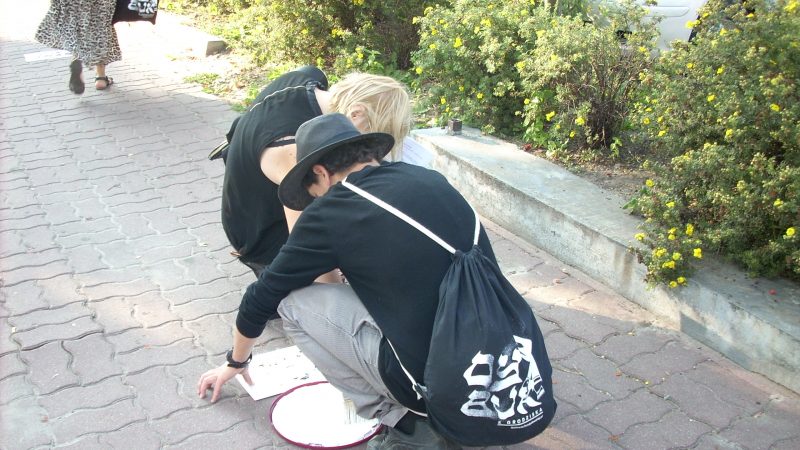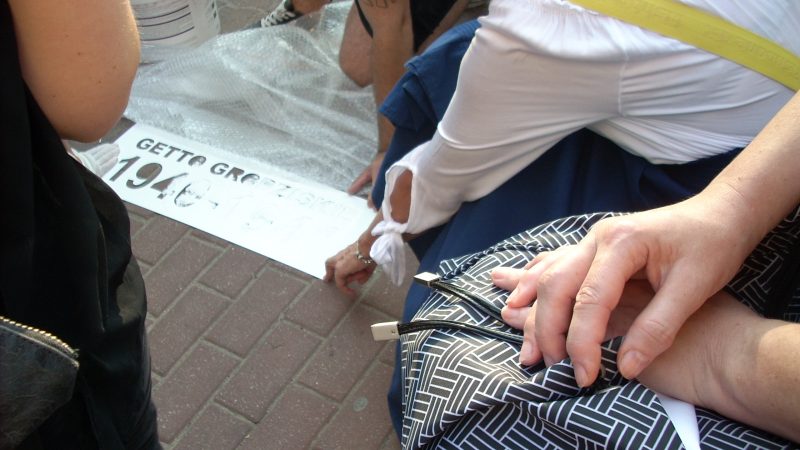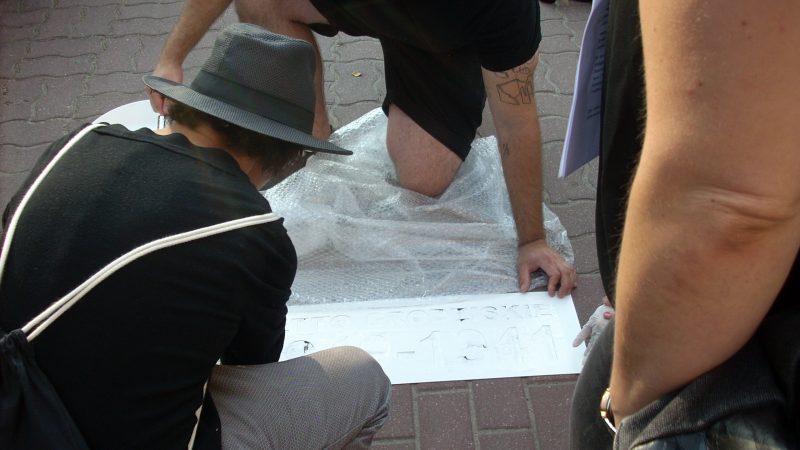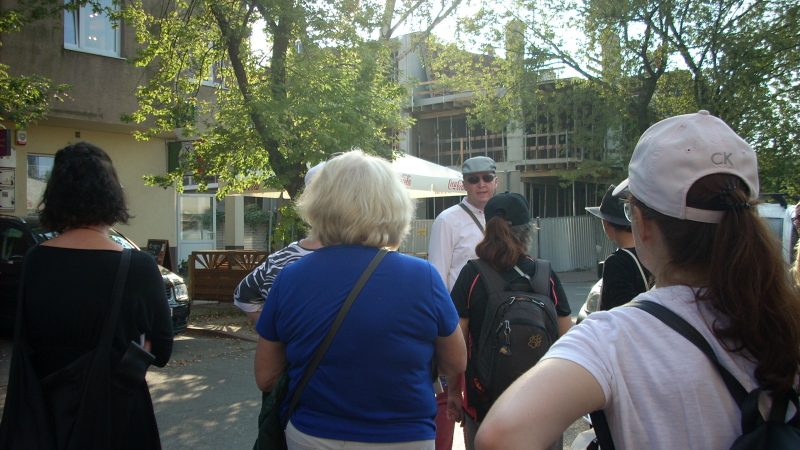Many people are still not aware that there was a ghetto here…
In the 19th century, Jews constituted over 89 per cent of Grodzisk Mazowiecki inhabitants. To remind the Jewish history of the city, the New Culture and Education Association together with Taurus. Education and Culture Publishing House organised the 1st Jewish Culture Festival (12-18 September). WGM took part in one of the events – marking of the borders of the Grodzisk ghetto
17 September 2020
“The Jewish Culture Festival is the first such campaign in Grodzisk Mazowiecki,” says Piotr Strzemieczny, President of the New Culture and Education Association, which has been operating since 2012. “Here, the percentage of Jewish population was very high.”
In 1820, Jews constituted over 89 per cent of the city’s population. In 1921, it was only over 24 per cent, as they moved to larger cities, mainly Warsaw. During World War II, a ghetto was established in the city – in the area of the following streets: Berka Joselewicza, 11 Listopada, placu Piłsudskiego (now Wolności), placu Legionów (now Króla Zygmunta Starego), Limanowskiego – where in 1941 there were 6 thousand people. On 10-20 February 1941, it was liquidated. The Jews were transported to the Warsaw ghetto and from there to the Treblinka death camp.
“I lived in Grodzisk for 27 years,” says Piotr Strzemieczny, “I have lived in Łódź for five years and until recently, I did not know that there was a ghetto here. Its history has never been properly described. Many people are still not aware that there was a ghetto here. There is a mural at the railway station, there are remains of the Jewish cemetery… If we do not encourage the inhabitants to learn about history through social activity, the interest in it will die out completely. Old houses are being liquidated, and history can also die out with people’s memories.”
The President of the Association notes the interest of Grodzisk residents in the Jewish history of the city. It does not always have positive overtones: “Of course, we have encountered manifestations of anti-Semitism, as in every city and culture.”
The festival programme is extremely rich: “There were four of us working on it – me, Joanna Schumacher, Eliza Gaust and Dawid Gurfinkiel from the Dialogue Center Łódź,” he adds. “The programme could be richer, but given that it is the first edition and given our conditions, I think it is not too bad. We received a grant from the National Center for Culture Poland, National Heritage Board of Poland, PZU Foundation, i.a. the Embassy of Israel became our partner. The city of Grodzisk Mazowiecki provided us with logistics infrastructure and personnel base.”
Marking of the ghetto borders with inscriptions painted in white paint was one of the many events of the festival. Each of the people participating in the marking received a comic strip entitled “Edelman w Grodzisku” by Michał Rzecznik. After the defeat of the Warsaw Uprising, Marek Edelman, member of the command of the Jewish Combat Organisation, Alina Margolis-Edelman, Cywia Lubetkin, Icchak Cukierman, Adina Blady-Szwajger, Luba Zylberg, Lea Borkowska-Zylbersztajn, Symcha Rotem, Tuwia Borzykowski and Julian Fiszgrund were hiding in the house at ul. 3 Maja 50 since the end of 1944 until the beginning of 1945.
Anna Kilian
Photo WGM




